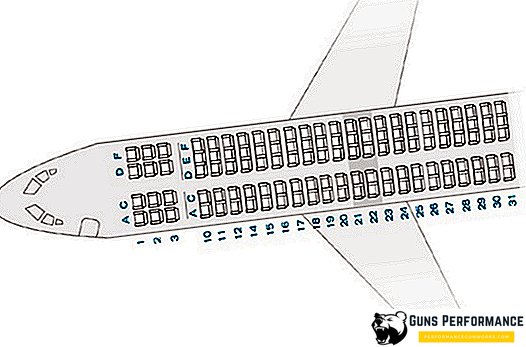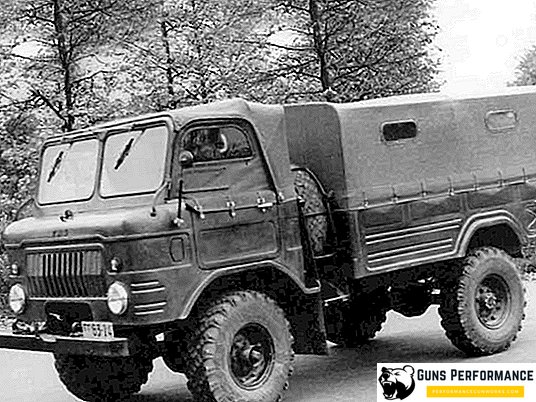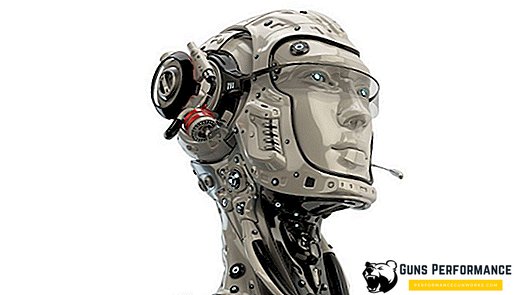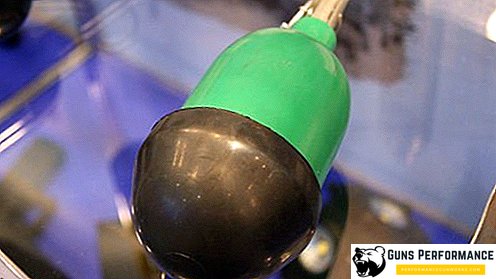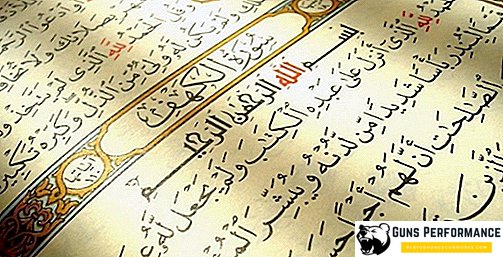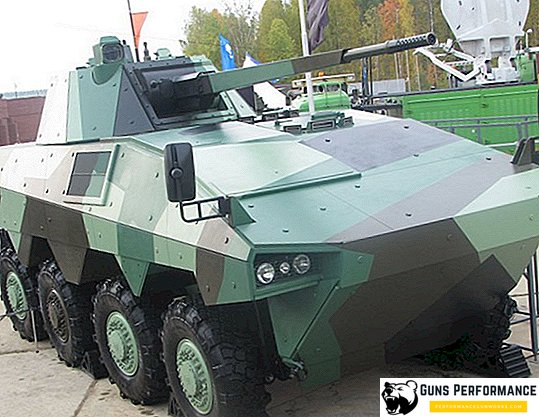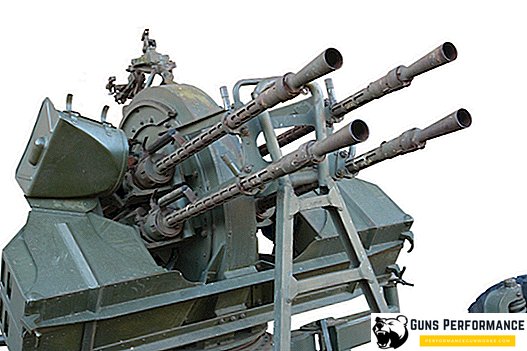
The KPV or Vladimirov heavy machine gun is a heavy machine gun that was put into service shortly after the end of World War II. The creator of this weapon is the Soviet arms designer Semen Vladimirovich Vladimirov.
The KPV machine gun has a caliber of 14.5 mm and uses a cartridge of 14.5 × 114 mm, which allows it to confidently hit enemy light armored vehicles and pose a certain threat even to heavy vehicles.
A large-caliber machine gun Vladimirov is considered to be one of the best large-caliber machine guns in the world. It organically combines the power of anti-tank guns and the rate of fire of the machine gun. This weapon was used in almost all large and small conflicts of the second half of the last century; it is still fighting KPV today.
At present, the KPV machine gun is in service with the Russian army, as well as several dozen more armies in the world. In Russia, this weapon is produced at the plant. Degtyareva, also KPV is made in Romania and in China.
On the basis of the CPV, a tank gun was created by Vladimirova, which is the standard weapon of many types of Soviet and Russian armored vehicles. Also CPV is often used as anti-aircraft weapons, it is very effective against low-flying aircraft and helicopters (up to 1500 meters).
It should be noted that the CPV is one of the most powerful large-caliber machine guns that exist in the world today. The muzzle energy of the KPV bullet is 31 kJ. For comparison, the same figure in the DShK is only 18 kJ, the ShVAK aircraft cannon is about 28 kJ (caliber 20 mm), and the famous American Browning M2HB (12.7 mm) - 17 kJ. For many decades, all of the armored vehicles of the countries participating in the NATO bloc have been developed with the level of protection necessary to withstand 14.5 mm KPVT bullets.

History of creation
At the time of the outbreak of war, the Red Army was armed with an excellent large-caliber DShK machine gun (12.7 mm), but already in 1942 the idea was born of creating an even more powerful anti-tank machine gun. The fact is that at the end of the 30s a powerful 14.5 x 114 mm cartridge was developed for anti-tank guns (PTR), which was effectively used in Soviet anti-tank guns.
The BS-1 bullet with a ceramic-metal core was able to penetrate 35 mm of armor at a distance of 300 meters. After the appearance of heavy tanks by the Hitlerites, the value of the PTR gradually began to decline, but they were in service until the end of the war.
In 1942, the idea was born to create a machine gun chambered for 14.5 x114 mm, he could have fought with great success not only with enemy armored vehicles, but also to destroy his firing points at considerable distances, as well as withstand the Luftwaffe armored attack aircraft. Such a machine gun is dangerous even for heavy vehicles: it cannot penetrate their armor, but it is capable of destroying the external equipment of the tank, aiming devices, breaking the tracks, wedging the turret.
The first attempts to develop a machine gun failed. In 1943, SV Vladimirov took up the development of a new weapon, taking as a basis the operation scheme of the automatics of the B-20 aircraft cannon.
Already in early 1944, ground tests of the new weapons began. After their completion, the manufacturer was ordered to make a batch of machine guns in an amount of 50 units and an anti-aircraft gun for testing, which began shortly after the end of the war. The new machine gun received the designation "large-caliber machine gun Vladimirov sample 1944" or reduced CPV-44.
The armament of the CPV was adopted in 1948. The new machine gun could use the entire range of ammunition that had previously been developed for PTR (armor-piercing bullets, armor-piercing incendiary, incendiary, explosive and others). The firing range (sighting) KPV was 2 thousand meters.
In 1948 for the machine gun Vladimirov was developed a machine design. True, in the future, the infantry version of the CPV was not particularly popular due to the excessive weight of the machine gun (52.3 kg), but anti-aircraft installations based on the CPV and tank modification of weapons (CPVT), which was adopted in 1955, were recognized. year

In 1949, the Soviet Army adopted three anti-aircraft installations based on a KPV: ZPU-1 (single-barreled), ZPU-2 (twin), ZPU-4 (quad). They were used during the Korean War, American helicopter pilots considered them the most dangerous enemy.
The first serious conflict in which the KPVT machine gun took mass participation (the KPV by that time was already decommissioned) was the war in Vietnam. In the late 60s, anti-aircraft machine-gun modifications were sent to this country.
KPVT was actively used during the Afghan war, and this machine gun was used by both parties to the conflict. The Mujahideen appreciated the power of these weapons, most often they used the Chinese version of the machine gun.

The machine gun of Vladimirova found use in the fleet, it was installed on boats and civilian ships to protect them from the attack of pirates.
In addition to Afghanistan, Vietnam and Korea, the machine gun Vladimirov managed to take part in a large number of other conflicts in various regions of the globe. He has established himself as a powerful and reliable weapon that can be used to solve a wide range of tasks.

Machine gun device
Automation CPV works due to the recoil energy of the barrel with a short stroke. The barrel bore is locked by engaging the combat larvae of the bolt with the barrel coupling. After the shot, the bolt moves back along with the barrel, compressing two springs: reciprocating-fighting and trunking.
When this happens the splitting of the table and the shutter. The barrel under the influence of the spring returns to its original position, and the bolt continues to move back, removing the sleeve and the new cartridge from the chamber.
With the help of the feeder, the new cartridge slides down the special grooves in the larva, pushing the sleeve out, and is installed in a capsule opposite the striker. The bolt under the action of springs moves forward, pushing the cartridge into the chamber and closing the barrel bore. At the rear of the machine gun body is the bolt of the bolt.

The shot is made from the rear of the sear, the machine gun can only conduct automatic fire. Food KPV is made from a metal tape. The feeder is installed at the top of the weapon. The feed direction of the tape can be easily changed, which is very important for installations consisting of several KPV machine guns. The reloading handle can be installed on different sides.
The machine gun is equipped with fuses that prevent shot and locking of the barrel if it is incorrectly connected.
Sights KPV consist of a sector sight in the rear of the receiver and front sight.
Initially, 14.5 × 114 cartridges with an armor-piercing incendiary, armor-piercing and armor-piercing incendiary-tracer bullets were used for firing from the CPV. Then a shooting-tracer bullet and an instant-action incendiary bullet were developed, which was particularly effective for firing at air targets.
The undoubted advantages of the CPV include the highest power of this machine gun, the smooth operation of its automation, reliability in any operating conditions.
Modifications
There are several modifications machine gun Vladimirov. The most common of these is the variant developed for installation on military equipment - KPVT. In general, it differs little from the basic modification, however, there are some peculiarities related to the specifics of its work.

KPVT has no open sights, instead of them on the machine gun mounted telescopic sight. The weapon is equipped with an electric trigger, which is powered by a battery. At KPVT has a counter shots, as well as a mechanism for remote reloading, acting from the pneumatic system. A special socket is used to remove spent cartridges from the turret of a combat vehicle. Also, KPVT slightly increased the diameter of the barrel housing.
KPVT was installed on many models of military equipment, both Soviet and made in other Warsaw Pact countries: on the T-10 tank, BTR-60, -70, -80 armored personnel carriers, on the BRDM-2 reconnaissance and patrol vehicle.
Anti-aircraft modification is no less popular than the tank. Initially, three types of anti-aircraft installations were made: single-barreled, twinned and four-barreled. KPV anti-aircraft systems were used during the Korean War. The Americans considered them the most dangerous opponents for helicopters.
Then in 1950, a 14.5-mm twin anti-aircraft unit was developed for the airborne troops. She had a relatively small weight and could understand to carry. In 1953, a small-sized “mountain” anti-aircraft 14.5-mm ZGU-1 unit was developed, which was later the first to be sent to Vietnam.

Anti-aircraft guns are equipped with special sights, they can hit air targets at an altitude of up to 1.5 thousand meters. They are also capable of firing on ground targets.
In the Navy used and easel KPVT, and anti-aircraft modifications machine gun Vladimirov.
Very often, the CPV and its modifications were used for other purposes. For example, the Afghan Mujahideen actively used anti-aircraft KPV for firing at ground targets. The artfully converted KPV even got its own name - “Zikrat”.

Specifications
Below are the characteristics of 14.5-mm machine gun CPV:
- caliber - 14.5 mm;
- cartridge - 14.5x115 mm;
- the mass of weapons - 52.3 kg;
- length - 2000 mm;
- type of food - a tape for 40 or 50 rounds;
- rate of fire - 600 shots per minute;
- firing range sighting - 2000 meters.


